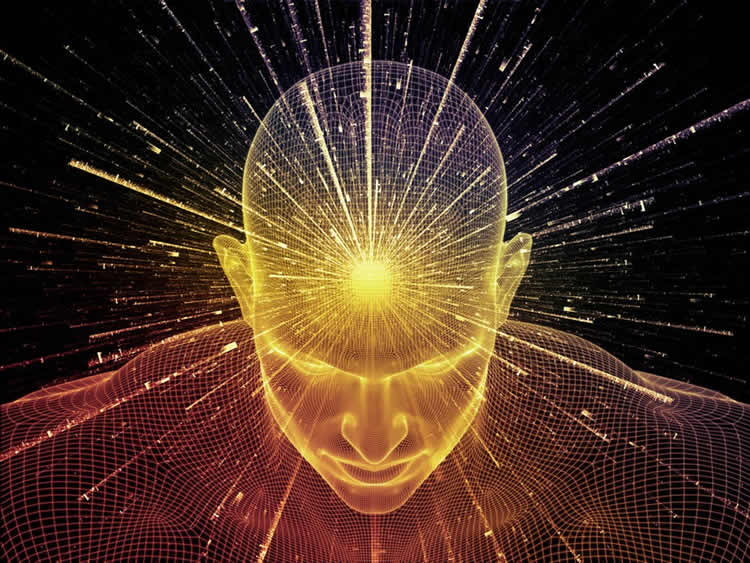Summary: A new article looks at theories of consciousness and novel research aimed at providing a better understanding of the roots of consciousness.
Source: The Conversation.
Understanding the biology behind consciousness (or self-awareness) is considered by some to be the final frontier of science. And over the last decade, a fledgling community of “consciousness scientists” have gathered some interesting information about the differences between conscious and unconscious brain activity.
But there remains disagreement about whether or not we have a theory that actually explains what is special about the brain activity which produces our miraculous inner worlds.
Recently, “Integrated Information Theory” has been gaining attention – and the backing of some eminent neuroscientists. It says that absolutely every physical object has some (even if extremely low) level of consciousness. Some backers of the theory claim to have a mathematical formula that can measure the consciousness of anything – even your iPhone.
These big claims are controversial and are (unfortunately) undermining the great potential for progress that could come from following some of the ideas behind the theory.
Integrated Information Theory starts from two basic observations about the nature of our conscious experiences as humans. First, that each experience we have is just one of a vast number of possible experiences we could have. Second, that multiple different components (colours, textures, foreground, background) are all experienced together, simultaneously.
Given these two observations, the theory says that brain activity associated with consciousness must therefore be ever-changing, consist of lots of different patterns, and involve a great deal of communication between different brain regions.
This is a really solid starting point for a theory, and to some extent, we have been able to test it. In one experiment, for example, researchers looked at brain responses to a short pulse of “transcranial magnetic stimulation”, in which a magnetic coil is placed on top of the scalp, and a very brief pulse of magnetic field emitted.
The response was recorded from electrodes at locations all over the rest of the scalp. When fully awake, the response to the little burst of magnetic field would spread far and wide, in complex patterns of ripples.
But when participants were in deep sleep, or under general anaesthesia, the response did not spread very far from the magnet, and the shapes of the ripples were much more simple. These results support the theory. They demonstrate that when we’re conscious, each region of the brain is doing something different, but are all managing to communicate.
So far so good. But it would be great to go further than this. Hence the attempt to find a formula that can give us a precise “level of consciousness” from detailed data. It is here that the serious controversy begins.
The theory claims that the ultimate formula will somehow quantify the information something contains. In this context, “information” means how much you can find out about the past and future of the object in question by looking in detail at the present.

For example, you record voltages from a bunch of neurons in the brain, and see how well you can use one result to predict earlier and later results. If you can make good predictions from using the readings from all neurons, but only poor predictions if you use just some neurons, then you score high.
Deep thinking
It is understandable to be perplexed by all of this – attempts at a formula have run into numerous problems, theoretical and practical. A candidate formula has been written down, but it doesn’t work. There are example cases of it not giving a clear answer. And it would take far too long to compute for complex human brain data.
Some people think perhaps this theoretical mathematical endeavour should be shelved for now. Experimental research on consciousness is going well, so maybe we should all just focus on that. But we can’t just do fact gathering experiments – we need a theory to understand what we’ve seen, and the basics of Integrated Information Theory do hold promise.
What about the theory’s “panpsychist” position – the idea that everything is conscious? Can this be taken seriously? We need to be careful how to express this – talk of conscious spoons is unhelpful.
If there were already many competing plausible mathematical descriptions of consciousness, none of which could be tested, then there would be no value in creating another. But so far there are zero, and only a handful of researchers have been working on this.
Einstein’s theory of gravity was utterly compelling, even before it could be tested. Integrated Information Theory is not yet compelling to the informed mathematician. But it is by far the most promising foundation from which to tackle the very roots of consciousness. And progress on this ultimate frontier is worth some more conscious effort.
Funding: Adam Barrett receives funding from EPSRC.
Source: Adam Barrett – The Conversation
Publisher: Organized by NeuroscienceNews.com.
Image Source: NeuroscienceNews.com image is adapted from The Conversation news release.
Video Source: Video credited to Galen Orwell.
[cbtabs][cbtab title=”MLA”]The Conversation “Why We Need to Figure Out a Theory of Consciousness.” NeuroscienceNews. NeuroscienceNews, 15 May 2018.
<https://neurosciencenews.com/consciousness-theory-9059/>.[/cbtab][cbtab title=”APA”]The Conversation (2018, May 15). Why We Need to Figure Out a Theory of Consciousness. NeuroscienceNews. Retrieved May 15, 2018 from https://neurosciencenews.com/consciousness-theory-9059/[/cbtab][cbtab title=”Chicago”]The Conversation “Why We Need to Figure Out a Theory of Consciousness.” https://neurosciencenews.com/consciousness-theory-9059/ (accessed May 15, 2018).[/cbtab][/cbtabs]







